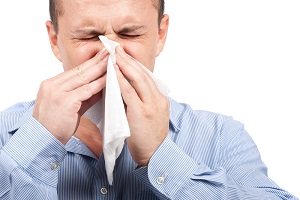 Runny noses, coughing, and that overall “icky” feeling, urgh – the Flu. Flu season may be starting soon and there are many ways to naturally increase your immune system to protect yourself from catching that annoying virus this year.It is important to have a strong and healthy immune system. By keeping up with your workout regime, you are actually helping build a healthy immune system as well. It can also be helpful to add a few things in your daily practices.
Runny noses, coughing, and that overall “icky” feeling, urgh – the Flu. Flu season may be starting soon and there are many ways to naturally increase your immune system to protect yourself from catching that annoying virus this year.It is important to have a strong and healthy immune system. By keeping up with your workout regime, you are actually helping build a healthy immune system as well. It can also be helpful to add a few things in your daily practices.
Vitamin D
Fall and winter are the times when the probability of getting the flu is higher. This is because of the lack of vitamin D absorption that we get from the sun. Vitamin D regulates the immune system by increasing production of broad-spectrum antimicrobial peptides which destroy the influenza virus. At the same time these peptides prevent the body from manufacturing an abundance of inflammatory cells which suppress the immune system. To increase your Vitamin D naturally (other than the sun) try salmon, sardines and cod liver oil.
Vitamin C
Vitamin C boosts the immune system by increasing the level of antibodies and white cell production. Vitamin C also strengthens the respiratory system by reducing inflammation and increasing collagen, which greatly increases our ability to fight against infections and viruses. Some natural sources of Vitamin C are oranges, grapefruit and sweet red pepper, which actually has twice the Vitamin C content of oranges.
Vitamin E
Vitamin E work in tandem with Vitamin C to build our immune system by reducing inflammation. Vitamin E protects the immune cells by protecting the membrane of the cell. It also increases the protection of lymphocytes called natural killer cells that kill germ and cancer cells and it increases the production of antibodies that eliminate bacteria. Natural ways to add Vitamin E into your diet are avocado, almonds, peanuts, dark leafy vegetables, wheat germ and mango.
Carotenoids
Carotenoids are phytonutrients that are responsible for the bright colors of fruits and vegetables. Carotenoids are antioxidants that reduce inflammation by destroying free radicals that damage the cells. The main Carotenoids is Beta Carotene. The body converts Beta Carotene into Vitamin A. Beta Carotene increases immune cell production and protects the mucous membranes and lining of the lungs, which increases the ability to fight infections. Find natural Carotenoids in carrots, sweet potatoes, pumpkin and winter squash.
Omega-3 Fatty Acids
Omega 3s are essential for boosting the immune system. They reduce inflammation and protect the integrity of cell structure. Omega 3s also help to dilate the blood vessels, which helps cells to absorb important nutrients. Natural sources of Omega-3 Fatty Acids are salmon, cod liver oil and flax oil.
Water
Water is important for healthy cells. Water works as a transport for minerals and vitamins to our cells. Water aids in keeping cells plump allowing them to absorb important nutrients for cell metabolism and proper function.
Exercise
Keeping fit and active is important in keeping the immune system working. Exercise increases blood circulation which is very important. The body needs good blood flow to transport oxygen and nutrients to the cells. Exercise also decreases cortisol levels, helping alleviate stress which then allows the body to produce immune fighting cells.
Sleep
Getting enough sleep is essential. Sleep allows your body to rejuvenate cells and helps the immune system function properly. Sleep also keeps cortisol levels down keeping immune cells at a good level and keeping your energy level up.
Other factors that can naturally help protect yourself from the influenza virus are good levels of:
- Bioflavonoids
- Zinc
- Selenium
Decreasing your stress, avoiding sugar, excess alcohol and caffeine is also extremely helpful to protect you from the higher probability of catching the flu.
For more articles go to http://clubonefitness.lifestyleezine.com

 The benefits of caffeine and coffee are more than just helping you stay awake in class or during that boring business meeting. And, you don’t always have to drink something to get the benefits of caffeine. The most obvious health benefit as already noted is that it acts as a stimulant, improving thought processes, wakefulness, focus and condition, especially in sleep-deprived states. This systemic stimulation of the body can also increase metabolism and willingness to carry out activities.
The benefits of caffeine and coffee are more than just helping you stay awake in class or during that boring business meeting. And, you don’t always have to drink something to get the benefits of caffeine. The most obvious health benefit as already noted is that it acts as a stimulant, improving thought processes, wakefulness, focus and condition, especially in sleep-deprived states. This systemic stimulation of the body can also increase metabolism and willingness to carry out activities.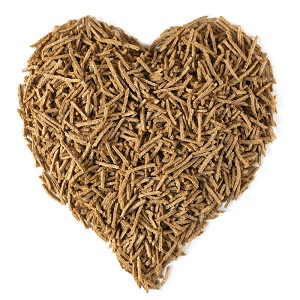 One of the simplest ways to kick start a healthy diet is to increase your dietary fiber. Processed food and fast food are easy and quick but they can wreak havoc on your digestive tract. Not only that but processed foods, which are high in fat and high and calories are linked to obesity and other diseases.
One of the simplest ways to kick start a healthy diet is to increase your dietary fiber. Processed food and fast food are easy and quick but they can wreak havoc on your digestive tract. Not only that but processed foods, which are high in fat and high and calories are linked to obesity and other diseases.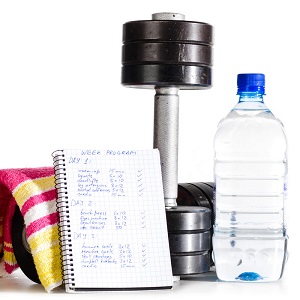 Changing your workouts every season can help reduce boredom and keep things fresh, leaving you energized and motivated to stay interested in working out.Try adding something new each season, Winter, Spring, Summer and Fall.
Changing your workouts every season can help reduce boredom and keep things fresh, leaving you energized and motivated to stay interested in working out.Try adding something new each season, Winter, Spring, Summer and Fall.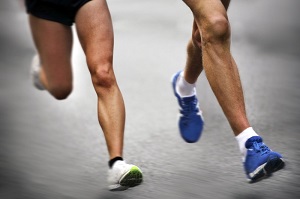 So, you’re getting ready to run a marathon. What should you do to really prepare? What should you eat, how should you train? Here are some helpful suggestions to get you on track to reaching your goal.
So, you’re getting ready to run a marathon. What should you do to really prepare? What should you eat, how should you train? Here are some helpful suggestions to get you on track to reaching your goal. It’s time to stop dreaming of what could be and take charge of your life. Success will not come to you automatically; you need to do something about it. When we take charge of our lives it frees us up to prosper. Take charge of your life and make the things that you want and your goals happen.
It’s time to stop dreaming of what could be and take charge of your life. Success will not come to you automatically; you need to do something about it. When we take charge of our lives it frees us up to prosper. Take charge of your life and make the things that you want and your goals happen. Thanks to celebrities, social media and news media lately, ALS has really gained some awareness. ALS stands for Amyotrophic Lateral Sclerosis. It is a neurodegenerative disease that is rapidly progressive, affecting the nerve cells of the brain and the spinal cord. What happens in ALS is that the nerve cells die and leave voluntary muscles paralyzed. ALS is often referred to as Lou Gehrig’s disease, named after the famous baseball player from the New York Yankees who was the first to be diagnosed with this disorder back in 1939. ALS disease is a progressive and fatal disorder, and the most common cause of death among ALS patients is respiratory failure and pneumonia which occurs in two to three years after diagnosis.
Thanks to celebrities, social media and news media lately, ALS has really gained some awareness. ALS stands for Amyotrophic Lateral Sclerosis. It is a neurodegenerative disease that is rapidly progressive, affecting the nerve cells of the brain and the spinal cord. What happens in ALS is that the nerve cells die and leave voluntary muscles paralyzed. ALS is often referred to as Lou Gehrig’s disease, named after the famous baseball player from the New York Yankees who was the first to be diagnosed with this disorder back in 1939. ALS disease is a progressive and fatal disorder, and the most common cause of death among ALS patients is respiratory failure and pneumonia which occurs in two to three years after diagnosis. A helicopter parent is essentially an over protective parent. Our children are our lives. It is our instinct to guide, help and protect them through life. But there is a fine line of protecting too much and allowing your child to learn and experience things for themselves. Helicopter parents will protect their children from any and all potential sources of harm, risk and/or disappointment. It’s where one of the best of intentions can lead to the worst of results.
A helicopter parent is essentially an over protective parent. Our children are our lives. It is our instinct to guide, help and protect them through life. But there is a fine line of protecting too much and allowing your child to learn and experience things for themselves. Helicopter parents will protect their children from any and all potential sources of harm, risk and/or disappointment. It’s where one of the best of intentions can lead to the worst of results.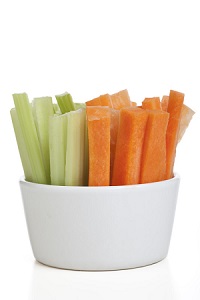 There is nothing worse than that hungry feeling in between meals. You don’t want to ruin all the hard work in your weight loss program by eating snacks throughout the day. You don’t have to have that feeling, there are lots of healthy snacks for weight loss that are delicious and still nutritious.
There is nothing worse than that hungry feeling in between meals. You don’t want to ruin all the hard work in your weight loss program by eating snacks throughout the day. You don’t have to have that feeling, there are lots of healthy snacks for weight loss that are delicious and still nutritious. 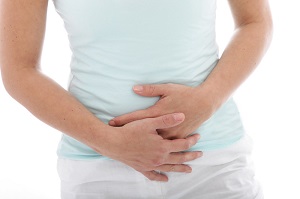 We’ve all had that feeling of being uncomfortably full. It’s an awful feeling. You’re tired, lethargic, in pain and a lot of times your clothes are too tight. Bloating usually occurs after eating or during menstruation. Flatulence, pain, and overall discomfort are its annoying symptoms. Bloating can be prevented and treated. There are foods that can help decrease bloat in the stomach.
We’ve all had that feeling of being uncomfortably full. It’s an awful feeling. You’re tired, lethargic, in pain and a lot of times your clothes are too tight. Bloating usually occurs after eating or during menstruation. Flatulence, pain, and overall discomfort are its annoying symptoms. Bloating can be prevented and treated. There are foods that can help decrease bloat in the stomach.